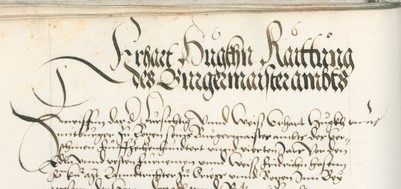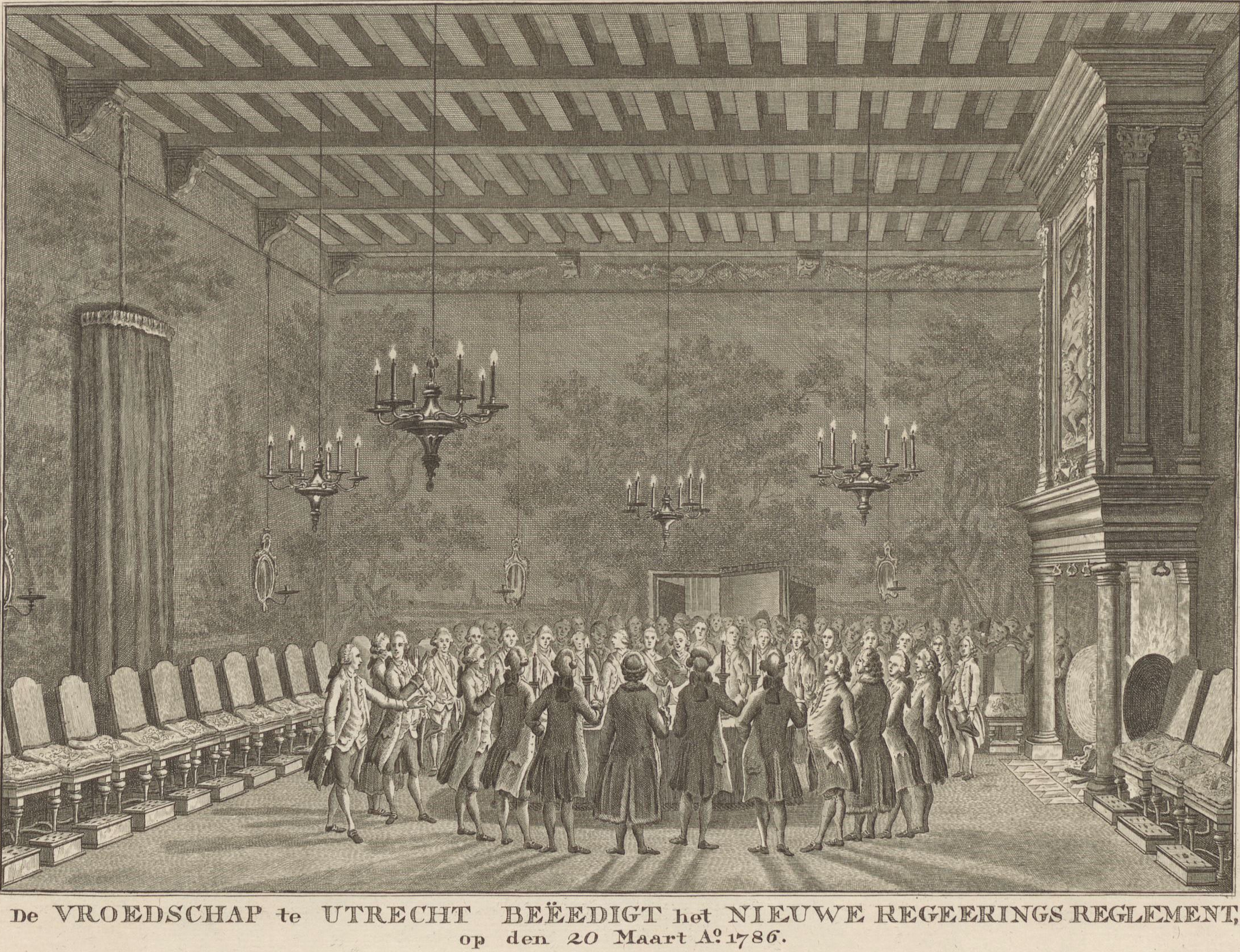|
Abraham Patras
Abraham Patras (22 May 1671 – 3 May 1737) was Governor-General of the Dutch East Indies from 11 March 1735 until 3 May 1737. He was born in Grenoble of a refugee French Huguenot family. In 1685, his family fled to the Netherlands. Early career Patras first took a job in the offices of an Amsterdam merchant named ''Nathaniël Gauthier'' (a fellow Huguenot), but he left for the Indies aboard the ''Hobree'' on 4 January 1690, where he is described as a soldier in the employ of the Enkhuizen branch of the Dutch East India Company. In 1691, he sought a change of career and got a temporary post as an agent in Batavia. In 1695 he became assistant/secretary to the ''Chinese estates-management administration'' in Ambon Island. In 1698 he was put in charge of children and matrimonial matters. He married in 1699 to a daughter of an official of the ''Judicial Council'' in Ambon. His wife died on the 16 December 1700. His only daughter also died young. Rising through the ranks Patras was nom ... [...More Info...] [...Related Items...] OR: [Wikipedia] [Google] [Baidu] |
Dirck Van Cloon
Dirck van Cloon (also Dirk and Theodoor van Cloon; 1684 – 10 March 1735) was Eurasian Governor-General of the Dutch East Indies. He died of malaria at the age of 50. He was born in Batavia sometime in 1684. For his education and training he was sent to the Netherlands. He graduated in Law at Leiden University on 1 April 1707. He returned to Batavia on the clipper ''Donkervliet'' and spent some time in Dutch Coromandel. He was among other things a district overseer in Sadraspatnam. He got into a fight with the governor of Coromandel, Adriaan de Visser, who accused Van Cloon of delivering bad quality goods. The government in Batavia sent Van Cloon back to the Netherlands, but he persuaded the Directors of the Dutch East India Company that de Visser was not to be trusted. Van Cloon was reinstated and he left for the Indies on 4 November 1719 on board the ''van de Huis te Assenburg'' as supercargo. In 1720, he became district chief at Negapatnam. In 1723, he became Governor ... [...More Info...] [...Related Items...] OR: [Wikipedia] [Google] [Baidu] |
Wijckel
Wijckel ( fry, Wikel) is a village in De Fryske Marren municipality in the province of Friesland, the Netherlands. It had a population of around 645 in 2017. History The village was first mentioned in the 13th century Wicle. The etymology is unclear. Wijckel is a spread out village along the roads. The Dutch Reformed Church has a 15th century tower which has been enlarged in 1821. In 1671, a new church has been adjacent to the tower. In 1840, Wijckel was home to 470 people. In 1975, the ''tjasker'' Zandpoel was built. Before 2014, Wijckel was part of the Gaasterlân-Sleat Gaasterlân-Sleat is a former Municipalities of the Netherlands, municipality in the northern Netherlands. Its official name is in West Frisian language, West Frisian, the Dutch language, Dutch name being Gaasterland-Sloten (). In 2014 it merged w ... municipality and before 1984 it was part of Gaasterland. Notable people Speed skater Marrit Leenstra is from Wijckel. References Gallery File:Wijckel Wik ... [...More Info...] [...Related Items...] OR: [Wikipedia] [Google] [Baidu] |
Onno Zwier Van Haren
Onno is a Dutch masculine given name of unclear origin. People with the name include: *Onno Boelee (1945–2003), Dutch-born New Zealand professional wrestler, actor, and stuntman *Onno J. Boxma (born 1952), Dutch mathematician * (born ca. 1943), Dutch ambassador * (1713–1779), Dutch politician, playwright and poet *Onno Hoes (born 1961), Dutch VVD politician *Onno Jacobs (born 1964), Dutch businessman *Onno Klopp (1822–1903), German historian * (1960–2008), Dutch actor *Onno Ruding (born 1939), Dutch banker, executive director of the IMF and Minister of Finance *Onno van de Stolpe (born 1959), Dutch businessman *Onno Tunç (1948–1996), Armenian-Turkish musician born ''Ohannes Tunçboyacıyan'' See also *Dinitrogen dioxide Dinitrogen dioxide is an inorganic compound having molecular formula . Many structural isomers are possible. The covalent bonding pattern O=N–N=O (a non-cyclic dimer of nitric oxide (NO)) is predicted to be the most stable isomer based on ab in ...(O ... [...More Info...] [...Related Items...] OR: [Wikipedia] [Google] [Baidu] |
Burgomaster
Burgomaster (alternatively spelled burgermeister, literally "master of the town, master of the borough, master of the fortress, master of the citizens") is the English form of various terms in or derived from Germanic languages for the chief magistrate or executive of a city or town. The name in English was derived from the Dutch ''burgemeester''. In some cases, Burgomaster was the title of the head of state and head of government of a sovereign (or partially or de facto sovereign) city-state, sometimes combined with other titles, such as Hamburg's First Mayor and President of the Senate). Contemporary titles are commonly translated into English as ''mayor''. Historical use * The title "burgermeister" was first used in the early 13th century. *In history (sometimes until the beginning of the 19th century) in many free imperial cities (such as Bremen, Hamburg, Lübeck etc.) the function of burgomaster was usually held simultaneously by three persons, serving as an executive co ... [...More Info...] [...Related Items...] OR: [Wikipedia] [Google] [Baidu] |
Vroedschap
The vroedschap () was the name for the (all male) city council in the early modern Netherlands; the member of such a council was called a ''vroedman'', literally a "wise man". An honorific title of the ''vroedschap'' was the ''vroede vaderen'', the "wise fathers" Most early modern Dutch cities were ruled by a government of male burghers or ''poorters'' (bourgeois) who were members of the regent class, the ruling elite. During late Medieval times, the regents had in all cities gradually managed to exclude men of the artisan class from membership, making themselves a sort of hereditary city nobility. In the Dutch Republic, a city administration consisted of the magistrate and the ''vroedschap''. The magistrate (or city government) consisted of a number, often four, of burgomasters assisted by a number of aldermen (''schepenen''), and looked after the daily administration of the city. In most cities, the mayors were chosen for a period of four years. The previous (and usually t ... [...More Info...] [...Related Items...] OR: [Wikipedia] [Google] [Baidu] |
Sloten, Friesland
Sloten (; fry, Sleat) is a historical fortified city within the municipality of De Fryske Marren, in the Dutch province of Friesland. Sloten lies adjacent to the Slotermeer and is situated between the towns of Lemmer and Balk. Sloten is one of the eleven Frisian cities and was an independent municipality until 1984. Sloten then belonged to the municipality of Gaasterlân-Sleat until 1 January 2014. In 2017, Sloten had 715 inhabitants. - CBS History Sloten originated in the thirteenth century as a settlement at a '' stins'' of the[...More Info...] [...Related Items...] OR: [Wikipedia] [Google] [Baidu] |
1740 Batavia Massacre
The 1740 Batavia massacre ( nl, Chinezenmoord, lit=Murder of the Chinese; id, Geger Pacinan, lit=Chinatown tumult) was a massacre and pogrom in which European soldiers of the Dutch East India Company and Javanese collaborators killed ethnic Chinese residents of the port city of Batavia (present-day Jakarta) in the Dutch East Indies. The violence in the city lasted from 9 October 1740, until 22 October, with minor skirmishes outside the walls continuing late into November that year. Historians have estimated that at least 10,000 ethnic Chinese were massacred; just 600 to 3,000 are believed to have survived. In September 1740, as unrest rose among the Chinese population, spurred by government repression and declining sugar prices, Governor-General Adriaan Valckenier declared that any uprising would be met with deadly force. On 7 October, hundreds of ethnic Chinese, many of them sugar mill workers, killed 50 Dutch soldiers, leading Dutch troops to confiscate all weapons fro ... [...More Info...] [...Related Items...] OR: [Wikipedia] [Google] [Baidu] |
Council Of India
The Council of India was the name given at different times to two separate bodies associated with British rule in India. The original Council of India was established by the Charter Act of 1833 as a council of four formal advisors to the Governor-General at Fort William. The ''Governor-General in Council'' was subordinate only to the East India Company's Court of Directors and to the British Crown. In 1858 the Company's involvement in India's government was transferred by the Government of India Act 1858 to the British government. The Act created a new governmental department in London (the India Office), headed by the cabinet-ranking Secretary of State for India, who was in turn to be advised by a new Council of India (also based in London). But this new council of India, which assisted the Secretary of state for India contained 15 members while the erstwhile council of India contained 4 members only and was referred to as Council of four. After the establishment of the Cou ... [...More Info...] [...Related Items...] OR: [Wikipedia] [Google] [Baidu] |
Deshima
, in the 17th century also called Tsukishima ( 築島, "built island"), was an artificial island off Nagasaki, Japan that served as a trading post for the Portuguese (1570–1639) and subsequently the Dutch (1641–1854). For 220 years, it was the central conduit for foreign trade and cultural exchange with Japan during the isolationist Edo period (1600–1869), and the only Japanese territory open to Westerners. Spanning or , Dejima was created in 1636 by digging a canal through a small peninsula and linking it to the mainland with a small bridge. The island was constructed by the Tokugawa shogunate, whose isolationist policies sought to preserve the existing sociopolitical order by forbidding outsiders from entering Japan while prohibiting most Japanese from leaving. Dejima would house Portuguese merchants and separate them from Japanese society while still facilitating lucrative trade with the West. Following a rebellion by mostly Catholic converts, all Portuguese ... [...More Info...] [...Related Items...] OR: [Wikipedia] [Google] [Baidu] |
Opperhoofd
''Opperhoofd'' is a Dutch word (plural ''opperhoofden'') that literally translates to "upper-head", meaning "supreme headman". The Danish equivalent ''overhoved'', which is derived from a Danish pronunciation of the Dutch or Low German word, is also treated here. In modern Dutch, ''opperhoofd'' remains in use for a native tribal chief, such as a ''sachem'' of Native Americans. Despite the superlative etymology, it can be applied to several chiefs in a single native community. However this article is devoted to its more former, historical use as a gubernatorial title, comparable to the English chief factor, for the chief executive officer of a Dutch ''factorij'' in the sense of trading post, as led by a factor, i.e. agent. The etymologically cognate title of Danish ''opperhoved'' (singular) had a similar gubernatorial use (sometimes rendered in English as station chief), notably in the Danish Gold Coast (in present Ghana). The German cognate is ''oberhaupt''. Dutch colonial ''opp ... [...More Info...] [...Related Items...] OR: [Wikipedia] [Google] [Baidu] |
Isaac Van Schinne
Isaäc van Schinne (1640–1686) was an ''opperhoofd'' in Deshima between 1681 and 1682. Isaac was baptized on 12 February 1640 in Middelburg. He married in that city on 12 October 1667 to Catharina Dammaert (1646–1683). His son Isaac was born in Veere. In 1676 he arrived in Deshima; after a year he left, but in 1679 he went again. In 1681 he was appointed as chief of the factory. After one year he had to leave. After his wife died he remarried the widow Aletta de Bitter (1654–1708). Early in 1684 they left Batavia and arrived in Middelburg later that year. Van Schinne was buried there on 18 September 1686; after a few years his widow and their daughter moved to Utrecht. References 1640 births 1686 deaths Dutch East India Company Dutch chiefs of factory in Japan {{Netherlands-bio-stub ... [...More Info...] [...Related Items...] OR: [Wikipedia] [Google] [Baidu] |




